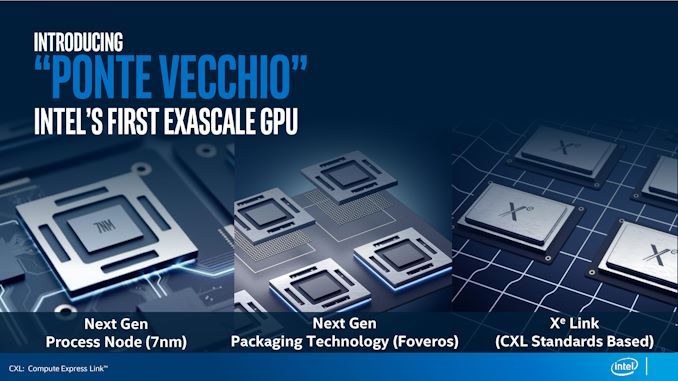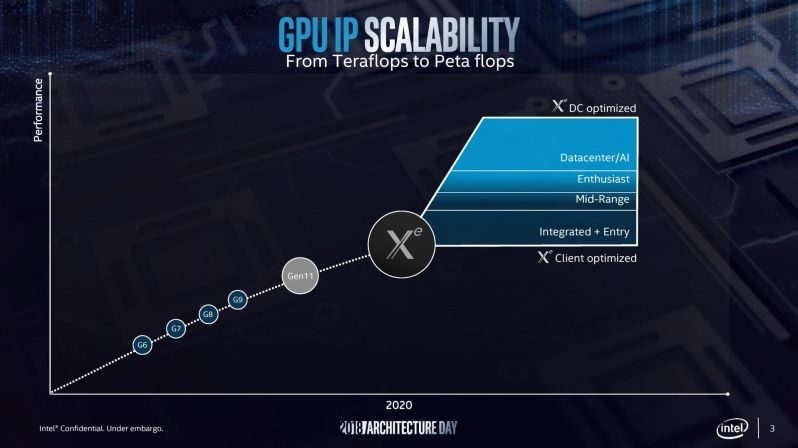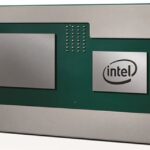Intel officially announced “Ponte Vecchio”, its new GPU architecture developed in 7nm and focused on the large HPC market.
Nvidia has already implemented its technology for this purpose, especially for AI calculation, and Intel seems willing to enter this market with Ponte Vecchio and its Xe architecture. In the midst of announcing the Ponte Vecchio architecture, Intel’s new GPUs for the Exascale” HPC market, Koduri seems a major player in the GPU computing trend.

During Intel’s SC19 event, Raja Koduri was on stage to show the company’s strategy for high-performance computing up to 2021. Intel revealed that its new hardware will be codenamed “Ponte Vecchio” and will be built on a 7nm process, as well as some other interesting details.
Raja Koduri helped Intel to launch the “GPU Computing” movement 14 years ago when he worked at AMD. This time he is refining the strategy for a more heterogeneous computing world.
Fourteen years ago, Raja Koduri helped launch the era of GPU computing a year before Nvidia chief Jensen Huang talked about the technology. The idea was that GPUs could do more than just create video game graphics that could solve scientific problems, which is just beginning.
Raja Koduri word’s about Ponte Vecchio
“We are at a turning point for high-performance computing,” Koduri said. “Twenty years ago, the HPC was dominated by vertically integrated architectures,” but then the X86 took over with open source software and an explosion of libraries, and all clusters, not just the HPC, became x86 with a variety of software.”
He just says, “There are several modes of operation in this architecture that make it much more flexible than current GPUs with existing architectures. Koduri said you can map “much more workloads to it,” adding, “We have a new way of vector processing in the architecture.
Koduri is confident that this new graphical architecture will be more flexible and powerful for AI or scientific computing that requires large-scale processing than Nvidia currently offers. We will see to what extent this is true, but Koduri was a visionary in this direction, where GPUs are no longer only used for games, but now play a more important role.

Ponte Vecchio Technology
For high-performance computing, the presentation highlighted three core areas that the Xe architecture will cover. The first is a flexible parallel data vector-matrix engine that plays largely in the hands of AI acceleration and AI training. The second is the double high-precision performance (FP64), which has declined somewhat recently due to the reduction in IA precision workloads, but which remains an important requirement in traditional HPC workloads such as meteorology, oil and gas and astronomy (We should note that the chart shows a block of 15×7 units and the Intel gene architecture uses 7 threads per execution unit). The third part of this trident is that Intel’s HPC efforts will have a high cache and a high memory bandwidth, of which the slides suggest that they are coupled directly to individual computing chips to ensure a fast connection.
Ponte Vecchio, named after the bridge over the Arno River in Florence, Italy, will be Intel’s first “Exascale Class” graphics solution, clearly using both chipplet technology (based on 7 nm) and Foveros/Die Stacking. Ponte Vecchio will also use Embedded Multi-Die Interconnect Bridge (EMIB) technology to connect the chipsets.
Ponte Vecchio will be the accelerator for the Aurora supercomputer to be installed at the Argonne National Laboratory in 2021. Intel has announced that it will have two Sapphire Rapids CPUs (the one that follows Ice Lake) and six Ponte Vecchio GPUs in a single node. Last but not least, in one of the slides (above) you can also see the gaming segment among Intel’s plans, confirming that we will have video game graphics cards based on this architecture. We will keep you informed.
Sources: anandtech, techpowerup, zdnet







Leave a Reply